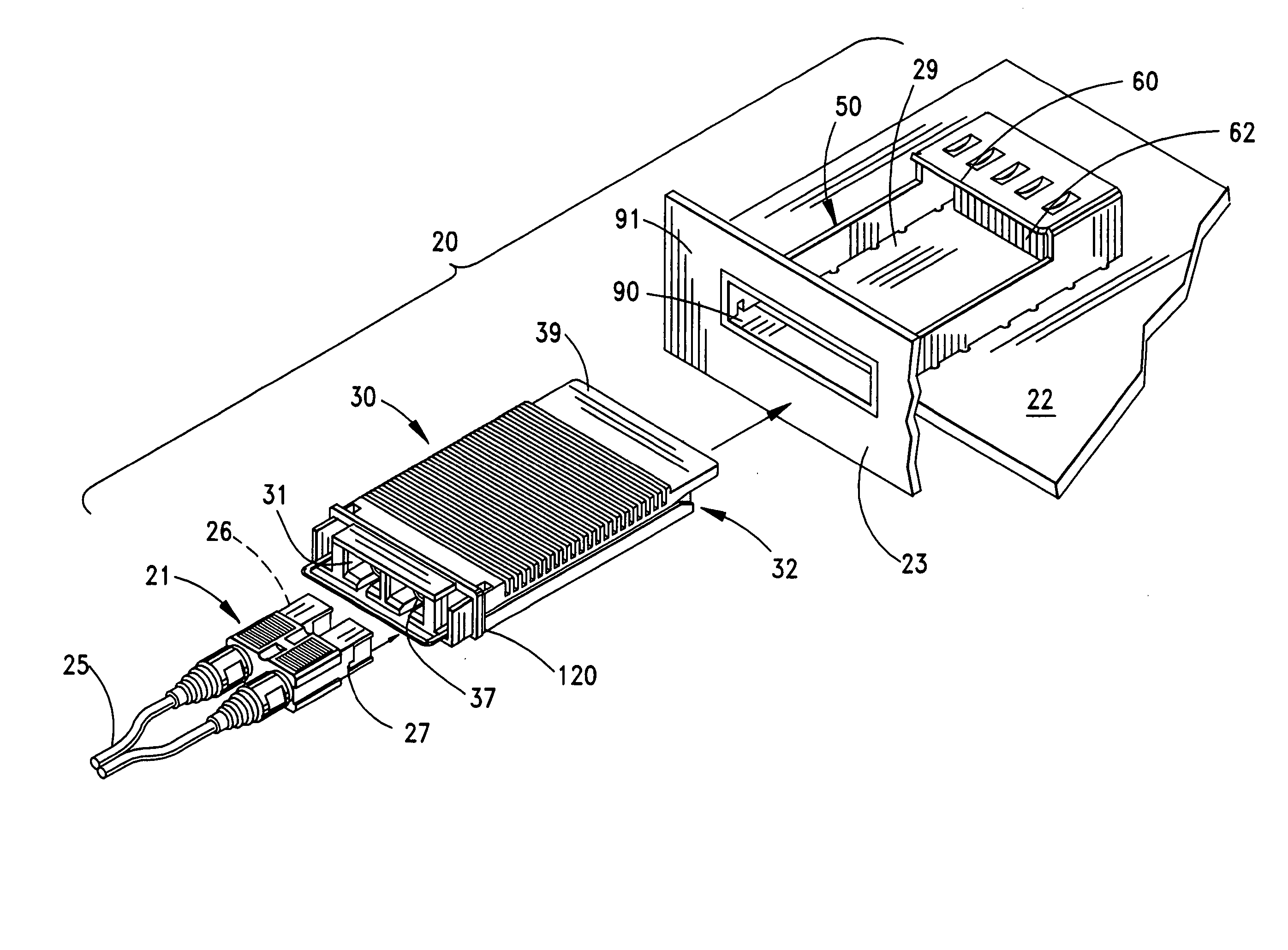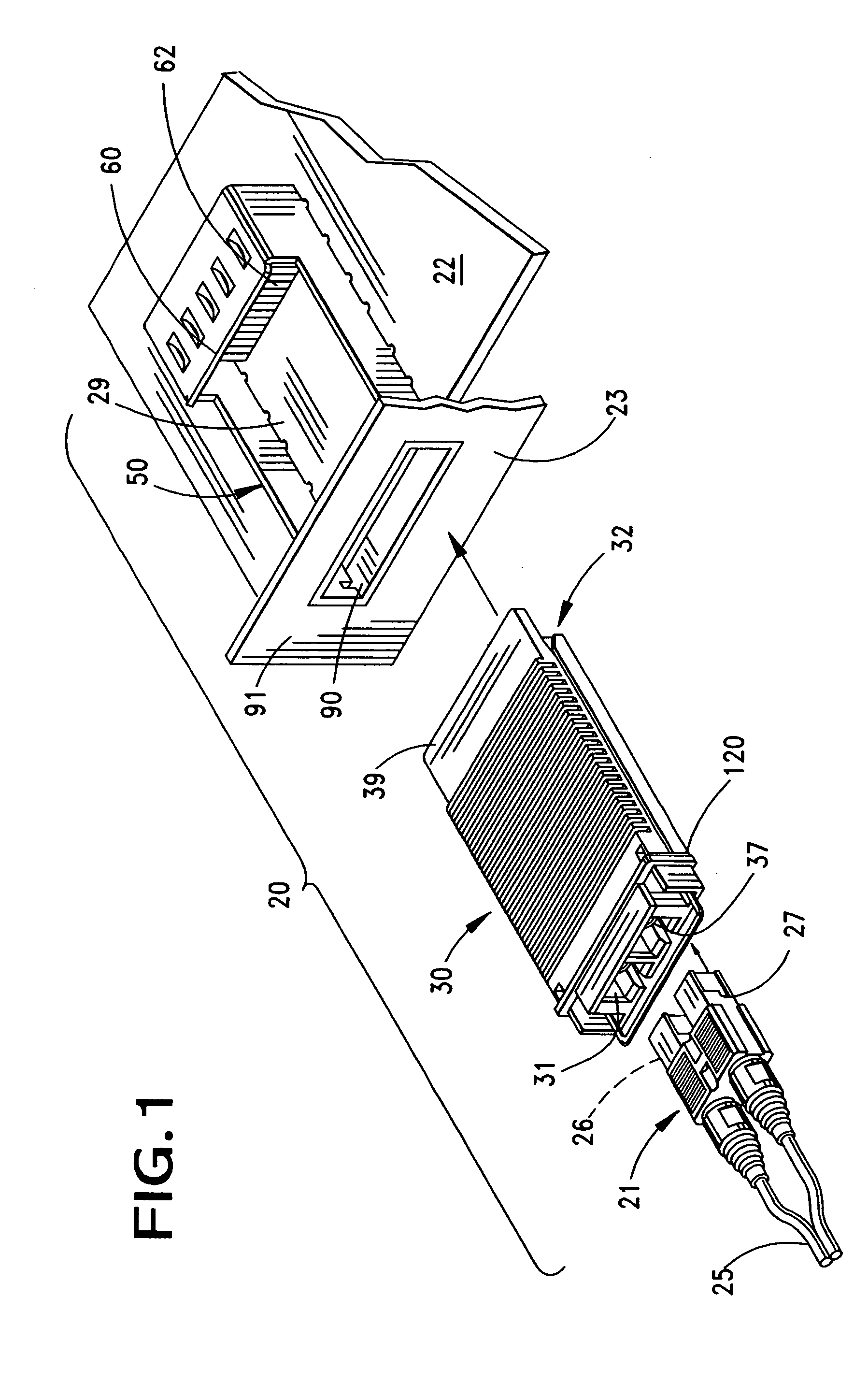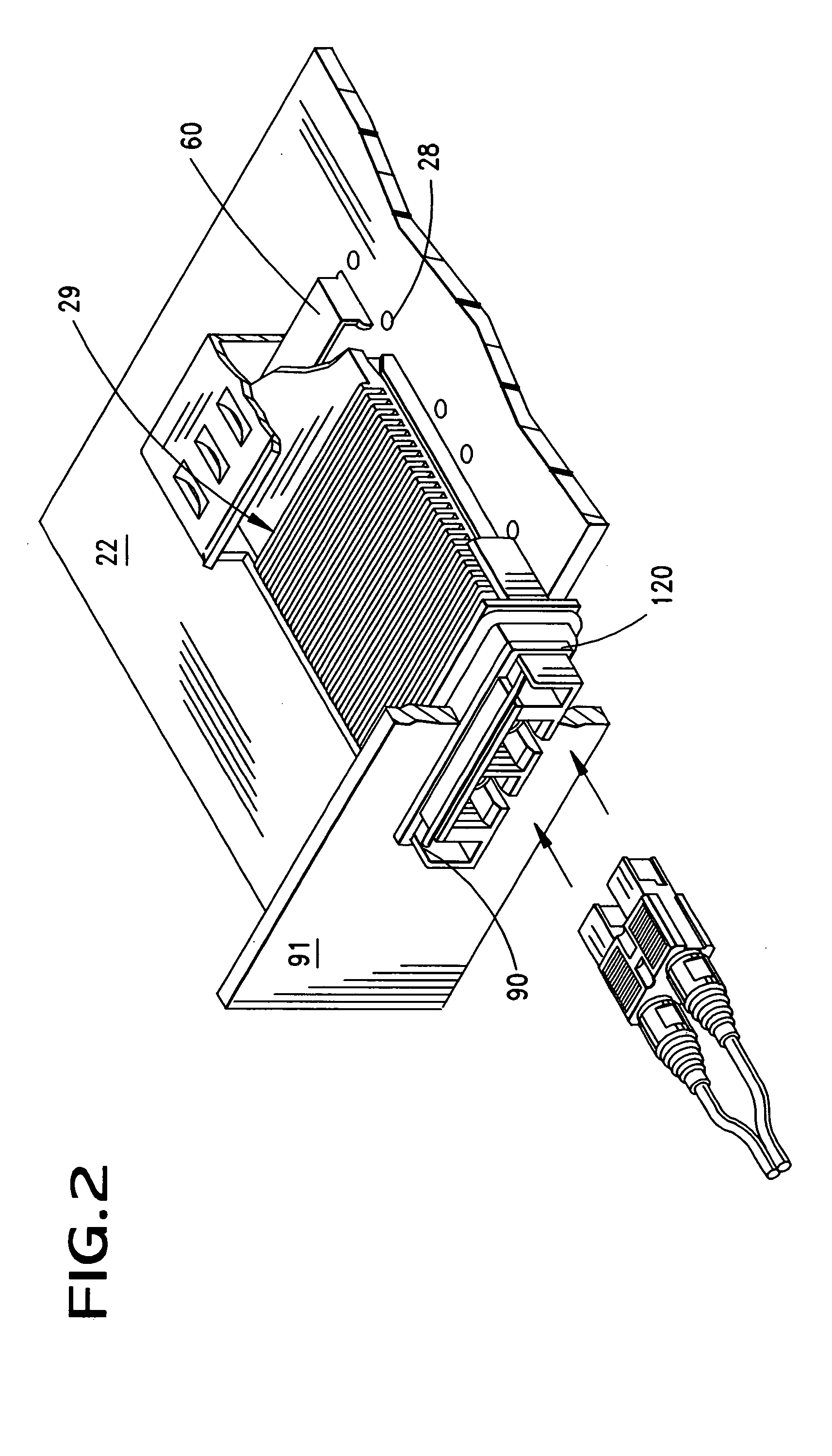Module retention latch assembly
- Summary
- Abstract
- Description
- Claims
- Application Information
AI Technical Summary
Benefits of technology
Problems solved by technology
Method used
Image
Examples
Embodiment Construction
[0061]FIG. 1 illustrates an electrical assembly 20 that is used to provide an interface between one device (not shown) that has a cable assembly 21 leading from it to another electronic device (also not shown) that has a circuit board 22 associated therewith and which is enclosed in a housing 23. Such assemblies are commonly used in the telecommunication industry and may include a fiber or other type of optical deice that transmits signals through a fiber optic cable 25 which are terminated to one or more transmitters 26, that are housed within connector housing 27 that are illustrated as plug connectors in the drawings.
[0062] These cable assemblies 21 plug into what is known in the art as an adapter module 30 that in turn is received within an adapter frame 50 that is mounted to the circuit board 22 and that partially surrounds, or encloses, a connector 60 mounted on the circuit board 22 and having a plurality of conductive terminals 62 that are terminated to circuits on the circu...
PUM
 Login to View More
Login to View More Abstract
Description
Claims
Application Information
 Login to View More
Login to View More - Generate Ideas
- Intellectual Property
- Life Sciences
- Materials
- Tech Scout
- Unparalleled Data Quality
- Higher Quality Content
- 60% Fewer Hallucinations
Browse by: Latest US Patents, China's latest patents, Technical Efficacy Thesaurus, Application Domain, Technology Topic, Popular Technical Reports.
© 2025 PatSnap. All rights reserved.Legal|Privacy policy|Modern Slavery Act Transparency Statement|Sitemap|About US| Contact US: help@patsnap.com



